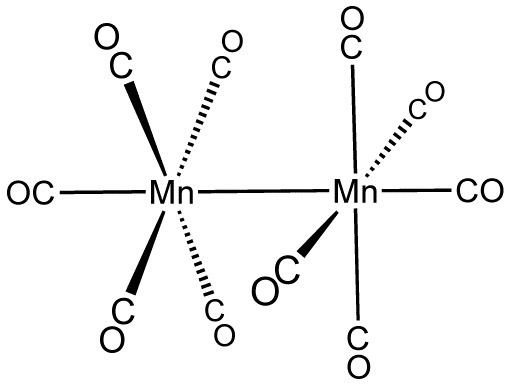Formula C10O10Mn2 Density 1.75 g/cm³ Boiling point 60 °C | Molar mass 389.98 g/mol Melting point 154 °C Appearance yellow crystals | |
 | ||
Related compounds | ||
Dimanganese decacarbonyl is the chemical compound with the formula Mn2(CO)10. This metal carbonyl is an important reagent in the organometallic chemistry of manganese.
Contents
Synthesis
The compound was first prepared in low yield by the reduction of manganese iodide with magnesium under CO. A more efficient preparation entails reduction of anhydrous MnCl2 with sodium benzophenone ketyl under 200 atmospheres of CO. The availability of inexpensive methylcyclopentadienyl manganese tricarbonyl ("MMT") has led to a low pressure route to Mn2(CO)10.
Structure
Mn2(CO)10 has no bridging CO ligands: it can be described (CO)5Mn-Mn(CO)5. There are two kinds of CO ligands; one CO on each Mn is coaxial with the Mn-Mn bond (293 pm), and four on each manganese that are perpendicular to it (equatorial). In the stable rotamer, the two Mn(CO)5 subunits are staggered. The overall molecule thus belongs to the point group D4d, which is an uncommon symmetry.
Reactions
Mn2(CO)10 is air stable as a crystalline solid, but solutions require Schlenk techniques. It finds limited use in organic synthesis. Characteristic reactions:
The anion is a versatile nucleophile. Protonation gives the hydride [HMn(CO)5], and methylation gives [(CH3)Mn(CO)5].
Safety
Mn2(CO)10 is a volatile source of a metal and a source of CO.
